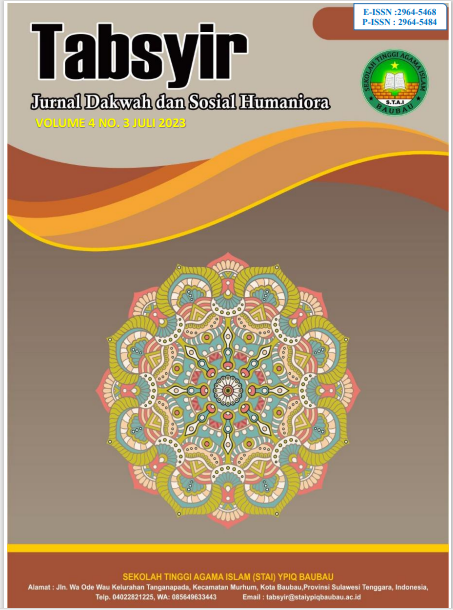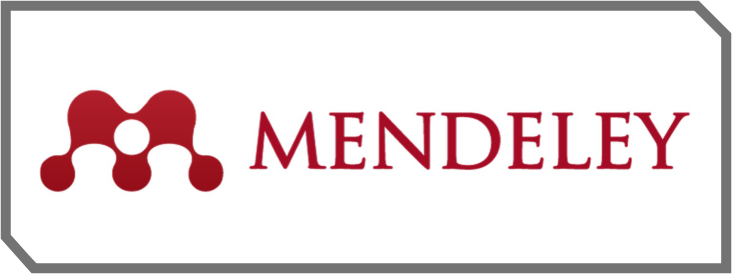Strategi Dakwah Nahdlatul Ulama Dan Muhammadiyah Dalam Perspektif Pemanfaatan Media Massa Pada Era Globlalisasi Di Kabupaten Pacitan
DOI:
https://doi.org/10.59059/tabsyir.v4i3.135Keywords:
Massa media, Nahdlatul ulama, MuhammadiyahAbstract
Good media and audience support good strategy, in general. From among the many different media that can be used as an Islamic propaganda tool, mass media is currently the most effective and efficient. The two largest organizations in the Pacific region are Nahdlatul Ulama and Muhammadiyah. The success of this Islamic organization in promoting dakwah is directly related to the application of sound and reliable dakwah strategies. The current study analyzes the tactics used by the two largest organizations, Nahdlatul Ulama and Muhammadiyah, in Kabupaten Pacitan, to spread Islam through public media. The current study makes use of techniques for collecting data up to and including data analysis that are appropriate for qualitative research methodologies to uncover data-data that shed light on a problem that has already been raised, specifically the comparison of media mass media use strategies across two study objectives. After conducting research with the available data, it is possible to draw the conclusion that the most effective method of mass media use for organizations like the Muslim Brotherhood's Nahdlatul Ulama is through online media, while organizations like the Muhammadiyah are also effective when using online media. Similar and different. The collaboration between the two organizations in this regard is focused on using the media mass as it is, as well as on working together with other media mass. The opposite is also true, as evidenced by the widespread use of media by nahdatul ulama and the Muslim community. Because Nahdatul Ulama and Muhammadiyah are predominately Nahdatul Ulama in Pacitan as a whole, Nahdatul Ulama use the media more frequently than Muhammadiyah does.
References
Daymon Christine – Haoloway Immy, Metode-Metode Riset Kualitatif dalam Public Relation dan Marketing Communication, Bandung : Mizan Media Utama, 2008.
Wahyu Wibowo (ed), Kedaulatan Frekuensi. Regulasi Penyiaran, Peran KPI dan Konvergensi Media, (Jakarta: PT. Kompas Media Nusantara, 2013).
Budi Setiawan, Bambang Eka Purnama, Pembangunan Radio Streaming Menggunakan Shoutcast Server Dan Edcast Plugin Pada Radio Gema Panca Arga Pacitan, Seruni FTI UNSA 2012 Volume 1 ISSN: 2302-1136
Syukir,Asmuni,1983, Dasar Dasar Startegi Dakwah Isalam,Surabaya: Al-Ikhlas.
Sanusi, 1985, Pengantar Studi Ilmu Dakwah, Semarang: Fakultas Dakwah IAIN Walisongo Profil Muhammadiyah 2005, Yogyakarta: Pimpinan Pusat Muhammadiyah, 2005.
Daoed Sampoerno. 2001. Membina Sumber Daya Manusia Muhammadiyah Yang Berkualitas. dalam Edy Suandi Hamid (ed.). Rekontruksi Gerakan Muhammadiyah Pada Era Multi Peradaban. Yogyakarta: Pimpinan Pusat Muhammadiyah.
Basit, Abdul. Dakwah Cerdas di Era milenial. Jurnal Komunikasi Islam. ISBN 2088-6314. Volume 03, Nomor 01, Juni 2013.
Abdurrahman Wahid, Prisma Pemikiran Gus Dur, Yogyakarta : LKiS,1999.
Khoirul Fathoni dan Muhammad Zen, NU Pasca Khittah:Prospek Ukhuwah Dengan Muhammadiyah, (Yogyakarta:Media Widya Mandala, 1992.
Arikunto Suharsimi, Prosedur Penelitian, Jakarta: Rineka Cipta, 1992.
Suryabrata Sumadi, Metodologi Penelitian, Jakarta: PT Raja Garindo Persada, 1983.
Fahrudin, Fuad, Agama dan Pendidikan Demokrasi Pengalaman Muhammadiyah dan Nahdlatul Ulama, Jakarta Pustaka Alvabet 2009
Khuluk Lathiful, Fajar Kebangunan Ulama: Biografi KH. Hasyim Asy’ari Yogyakarta: Lkis Printing Cemerlang
https://jatim.nu.or.id/matraman/mahasiswa-stainu-pacitan-dibekali-ilmu-penulisan-jurnal- jc1Jv
https://jatim.nu.or.id/matraman/stafsus-presiden-ajak-santri-pacitan-tingkatkan-kapasitas- literasi-digital-shlLp










